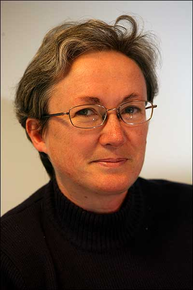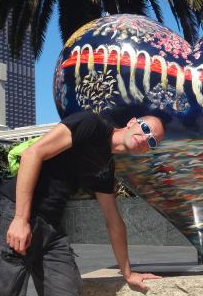Plénière 1: Light field image processing
Soutenue par  et
et 
Résumé :
Light field imaging is becoming increasingly popular thanks to recent advances in acquisition devices. By capturing light rays emitted along different directions, light fields yield a rich description of the scene, enabling post-capture processing that can be appealing for a variety of applications. However, the huge volume of high-dimensional light field data is an obvious issue for storage, transmission but also for fast processing. Acquisition devices designed so far to capture light fields come with some technological limitations that translate into trade-offs between angular and spatial resolution. This talk will review fundamentals in light field imaging, the related plenoptic function, the main capturing devices and will present fundamental problems in light field image processing.
Biographie :
 |
Christine Guillemot is currently Director of Research at INRIA (Institut National de Recherche en Informatique et Automatique) in France. She holds a PhD degree from ENST (Ecole Nationale Supérieure des Telecommunications) Paris (1992). From 1985 to 1997, she has been with France Telecom working in the areas of image and video compression for multimedia and digital television. From 1990 to mid 1991, she has worked as visiting scientist at Bellcore Bell Communication research) in the USA. Her research interests are signal and image processing, and in particular 2D and 3D image and video coding, joint source and channel coding for video transmission over the Internet and over wireless networks, and distributed source coding. She has served as Associate Editor for IEEE Trans. on Image Processing (from 2000 to 2003 and from 2014 to 2016), for IEEE Trans. on Circuits and Systems for Video Technology (from 2004 to 2006), IEEE Trans. On Signal Processing (2007-2009). for the Eurasip journal on image communication (2010-2016), and member of the IEEE journal on selected topics in signal processing (2013-2016). She is IEEE fellow since January 2013. |
Plénière 2: 3DoF+ and 6DoF immersive activities in MPEG standardization
Résumé :
360 video has recently gained a lot of interest because of the immersive feeling brought by this technology. Unfortunately, the quality of experience is currently not at the expected level. This presentation will recap the main current issues, and report how MPEG-I (Immersive part of MPEG) is tackling them through one short term project, 3DoF+, by adding motion parallax for restricted motion, and a longer term 6DoF project, that releases most of the constraints, in order to achieve free navigation in typical immersive applications.
Biographie :
 |
Joël Jung received the Ph.D. degree in Electrical Engineering from the University of Nice-Sophia Antipolis, Nice, France, in 2000. From 1996 to 2000, he was with the I3S/CNRS Laboratory, University of Nice-Sophia Antipolis, involved in the improvement of video decoders based on the correction of compression and transmission artifacts. He joined Philips Research France in 2000 as a Research Scientist in video coding, post-processing, perceptual models, objective quality metrics, and low-power codecs. He is currently with Orange Labs Paris, and has contributed to next generation 2D image and video coding, HEVC (JCT-VC group), and to 3D multi-view and depth coding (JCT-3V). His current research interests include representation format and compression for Virtual Reality and Augmented Reality, for next generation immersive 6 degrees of freedom video services. It includes immersive communications, and immersive free navigation in user generated and professional contents, considering light-field based techniques. He holds more than 50 patents in the field of video coding.
|

 et
et 



